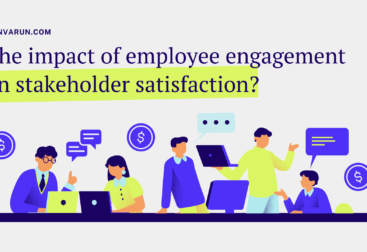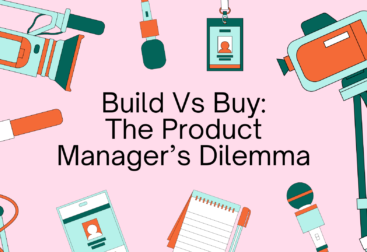As a product manager, you’re at the intersection of user needs, business goals, and technical feasibility. One of the most challenging aspects of the job is dealing with conflicting user feedback. This article aims to provide you with actionable strategies to prioritize product iterations when faced with such a dilemma. We’ll cover essential steps like listening carefully, categorizing issues, aligning with business goals, estimating impact, testing hypotheses, making informed decisions, and additional considerations. By the end, you’ll have a robust framework to tackle conflicting feedback with confidence.
1. Listen Carefully
The foundation of effective prioritization begins with listening. This isn’t just about hearing what users say but understanding the context, emotions, and underlying needs behind their feedback.
Example: Imagine you’re managing a project management tool, and you receive two pieces of feedback: some users want a simpler interface, while others request more advanced features.
To listen carefully, you might:
- Conduct in-depth interviews with a subset of users from both groups.
- Use sentiment analysis tools to gauge the emotional tone of the feedback.
- Review the feedback in the context of how users interact with your product.
Detailed Action Plan:
- User Interviews: Schedule interviews with 10-15 users representing each feedback group. Ask open-ended questions to uncover the motivations behind their requests.
- User Behavior Analysis: Implement analytics tools like Hotjar or FullStory to observe how users interact with your product. This can reveal pain points and areas of friction that users might not articulate directly.
- Feedback Channels: Ensure multiple channels (email, in-app surveys, social media) are available for users to provide feedback. Diverse feedback sources can offer a more comprehensive view of user needs.
Case Study: Slack’s Iterative Design
Slack often receives conflicting feedback from its users. To manage this, the team focused on qualitative feedback sessions where they listened to the nuances of user needs. For example, some users wanted more integrations, while others wanted a cleaner interface. By understanding the deeper needs—efficiency and simplicity—they were able to develop a solution that catered to both groups.
2. Categorize Issues
Once you’ve gathered and listened to feedback, categorize the issues. This helps in understanding the broader patterns and the specific areas needing attention.
Example: Using our project management tool scenario, you might categorize feedback into:
- Usability issues (e.g., confusing interface)
- Feature requests (e.g., advanced reporting tools)
- Performance concerns (e.g., slow load times)
- Customer support (e.g., better onboarding process)
Detailed Action Plan:
- Feedback Database: Use tools like Trello, Jira, or a custom database to store and categorize feedback. Ensure each piece of feedback is tagged with relevant categories for easy reference.
- Pattern Recognition: Analyze feedback trends over time to identify recurring issues. This can highlight systemic problems that need addressing.
- User Segmentation: Segment feedback by user type (e.g., new users vs. power users) to understand how different user groups experience your product.
Case Study: Trello’s Feedback Categorization
Trello uses a comprehensive feedback system where user inputs are categorized into themes such as usability, feature requests, and performance. This system allows them to see the most requested features and common pain points, making it easier to prioritize their development roadmap.
3. Business Alignment
Aligning feedback with your business goals is crucial. Not all feedback will align with where your company wants to go, and that’s okay.
Example: If your business goal is to target enterprise customers, the feedback requesting advanced reporting tools should take precedence over those asking for a simpler interface.
Detailed Action Plan:
- Business Goals Assessment: Clearly define your business goals and ensure they are communicated across the team.
- Prioritization Matrix: Create a prioritization matrix where you score each piece of feedback against business goals, user needs, and technical feasibility.
- Stakeholder Meetings: Hold regular meetings with stakeholders to review feedback alignment with business goals. Ensure everyone is on the same page regarding strategic priorities.
Case Study: Dropbox’s Strategic Alignment
When Dropbox shifted its focus from individual consumers to business clients, it received mixed feedback. By aligning their product iterations with the new business strategy, they prioritized features like team collaboration and administrative controls over individual consumer requests.
4. Impact Estimation
Estimate the impact of addressing each piece of feedback. High-impact changes should take precedence.
Example: Consider the potential impact on user satisfaction, retention rates, and new user acquisition. Addressing a performance issue that affects all users might have a higher impact than adding a new feature requested by a small subset.
Detailed Action Plan:
- RICE Scoring Model: Use the RICE (Reach, Impact, Confidence, Effort) scoring model to quantify the potential impact of each feedback item.
- User Surveys: Conduct surveys to gauge the perceived importance of different features or issues from a broader user base.
- Data Analysis: Analyze historical data to understand how similar changes have impacted key metrics like user retention and engagement.
Case Study: Intercom’s Use of RICE
Intercom uses the RICE scoring model to prioritize product features and fixes. By estimating the reach, impact, confidence, and effort, they ensure that high-impact changes are prioritized, leading to better resource allocation and more significant improvements for users.
5. Test Hypotheses
Before fully committing to a direction, test your hypotheses. This allows you to validate whether addressing certain feedback will have the expected impact.
Example: If users are requesting a simpler interface, run an A/B test with a streamlined version to see if it improves user engagement and satisfaction.
Detailed Action Plan:
- Prototype Development: Develop low-fidelity prototypes to test new ideas quickly and cost-effectively.
- A/B Testing: Use tools like Optimizely or Google Optimize to run A/B tests and gather quantitative data on user interactions.
- User Feedback Loops: Implement feedback loops where users can provide real-time feedback on new features or changes during the testing phase.
Case Study: Airbnb’s Experimentation Culture
Airbnb often tests new features with a small subset of users before a full rollout. When they received feedback about improving the booking process, they ran experiments to test different design iterations, validating the changes before making them permanent.
6. Make Decisions
After gathering data from your tests, make informed decisions. Balance user feedback with business goals, technical feasibility, and resource constraints.
Example: If the simplified interface significantly improved user engagement in your tests, prioritize its development. However, if the impact was marginal, consider other high-impact items.
Detailed Action Plan:
- Cross-Functional Collaboration: Involve cross-functional teams (engineering, design, marketing) in the decision-making process to ensure a holistic view.
- Decision Frameworks: Use frameworks like the Eisenhower Matrix to categorize tasks based on urgency and importance.
- Documentation: Document decision-making processes and rationale to ensure transparency and consistency.
Case Study: Atlassian’s Decision-Making Framework
Atlassian uses a combination of user feedback, business goals, and impact estimation to make decisions. They hold regular product prioritization meetings where data from various sources is reviewed to ensure that the most critical issues are addressed first.
7. Here’s What Else to Consider
Prioritizing product iterations effectively is an ongoing process. Here are additional considerations to keep in mind:
Communicate Transparently: Keep your users informed about what changes are coming and why. Transparency builds trust and can help manage user expectations.
Example: Send regular updates via email or through an in-app notification system detailing upcoming features and improvements based on user feedback.
Detailed Action Plan:
- Regular Updates: Schedule regular updates (weekly or monthly) to keep users informed about the product roadmap and upcoming changes.
- User Forums: Create user forums or communities where users can discuss changes and provide ongoing feedback.
- Feedback Acknowledgment: Acknowledge user feedback publicly to show that it is valued and considered in decision-making processes.
Stay Agile: Be prepared to pivot based on new feedback and changing market conditions. An agile approach allows you to respond quickly to user needs and competitive pressures.
Example: If a competitor releases a game-changing feature, reassess your priorities to ensure you remain competitive.
Detailed Action Plan:
- Sprint Planning: Implement agile methodologies such as Scrum or Kanban to enable quick iterations and pivots.
- Market Monitoring: Continuously monitor the market and competitor activities to anticipate changes and adjust priorities accordingly.
- Flexible Roadmaps: Keep product roadmaps flexible to accommodate new insights and shifting priorities.
Balance Short-Term Wins with Long-Term Vision: While addressing immediate user needs is important, don’t lose sight of your long-term product vision.
Example: Implementing quick fixes can keep users happy in the short term, but investing in a scalable architecture might be more beneficial for future growth.
Detailed Action Plan:
- Vision Workshops: Conduct regular workshops with the team to revisit and refine the long-term product vision.
- Balanced Scorecards: Use balanced scorecards to track short-term performance while keeping an eye on long-term goals.
- Investment Allocation: Allocate resources strategically between immediate fixes and long-term investments.
Leverage Data Analytics: Use data analytics to gain insights into user behaviour and identify
trends that may not be immediately obvious from qualitative feedback alone.
Example: Analyze user engagement metrics, churn rates, and feature usage patterns to inform your prioritization decisions.
Detailed Action Plan:
- Analytics Tools: Implement tools like Google Analytics, Mixpanel, or Amplitude to track user behaviour and engagement.
- Data Dashboards: Create data dashboards to visualize key metrics and trends in real time.
- Predictive Analysis: Use predictive analytics to forecast the impact of potential changes and guide prioritization decisions.
Case Study: Facebook’s Data-Driven Approach
Facebook extensively uses data analytics to inform product decisions. By analyzing how users interact with new features, they can make data-driven decisions about which iterations to prioritize and roll out to the broader user base.
Conclusion
Dealing with conflicting user feedback is a common challenge for product managers. You can prioritise product iterations effectively by listening carefully, categorizing issues, aligning with business goals, estimating impact, testing hypotheses, and making informed decisions. Remember to communicate transparently, stay agile, balance short-term wins with long-term vision, and leverage data analytics. With these strategies, you’ll be well-equipped to navigate the complexities of user feedback and drive your product to success.













